Bats are mostly considered spooky creatures with beady eyes and sharp fangs. But there is more to these nocturnal creatures. There are over one thousand three hundred bat species around the world.
They are the only mammals with the ability to fly. They have movable joints, enabling them to change direction easily.
The majority of bats are microbats, which feed on insects, then there are the vampire bats, which feed on blood. They prefer the blood of cattle and horses and not humans, so there is no reason to be concerned.
Many bats rely on echolocation, which enables them to locate objects using sound waves in the dark. They make high-pitched sounds that travel, hitting objects and bouncing back to them. This enables them to identify the size and distance of the object.
Megabats feed on fruit, pollen, and nectar with larger eyes and a strong sense of smell. These bats do not rely on echolocation. The bats that pollinate include:
Table of Contents
1. Tube-lipped Nectar Bat
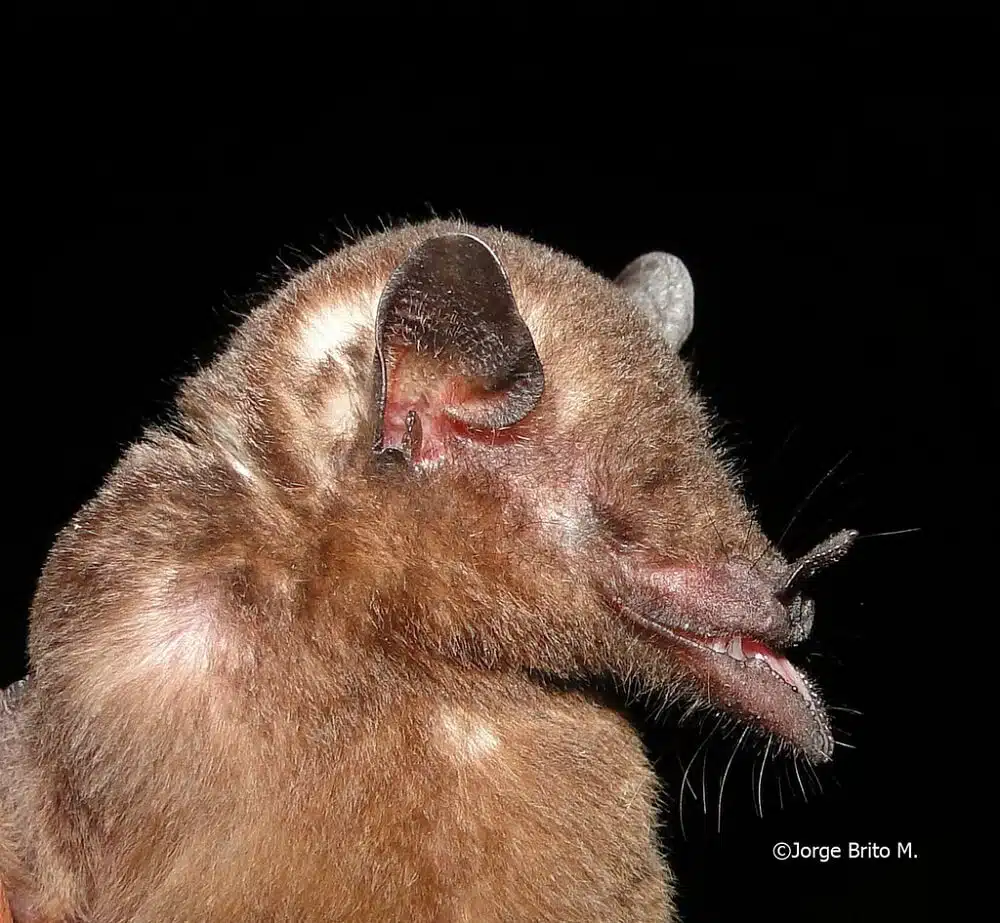
The Tube-lipped Nectar Bat (Anoura fistulata) is from Ecuador and was first described in 2005. It has a long tongue, that enables it to drink nectar. It also consumes insects and pollen. This bat has the longest tongue, which measures 8.5 centimeters, which is 150% the size of the bat’s overall body length.
This bat has a varied diet, including insects, nectar, and pollen. The Centropogon nicricans has up to a ninety-millimeter corollae and the tube-lipped bat is responsible for its pollination.
2. Banana Bat
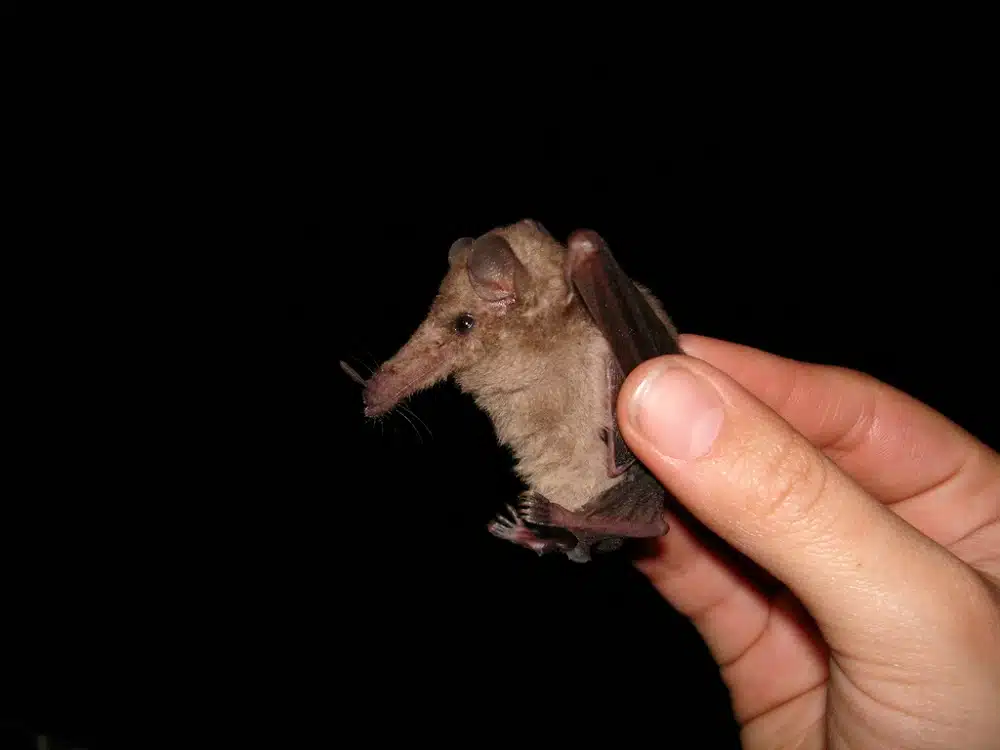
Banana Bats (Musonycteris harrisoni) are an endangered species, often referred to as the trumpet-nosed bat. This medium-sized bat can grow to 12.6 grams in males and 10.9 grams in females. They have small rounded ears and short tails.
These gray-to-brown bats were found in a banana grove in 1977 and are endemic to Mexico. It prefers subtropical or tropical dry shrubland and is threatened by habitat loss.
3. Lesser Long-nosed Bat
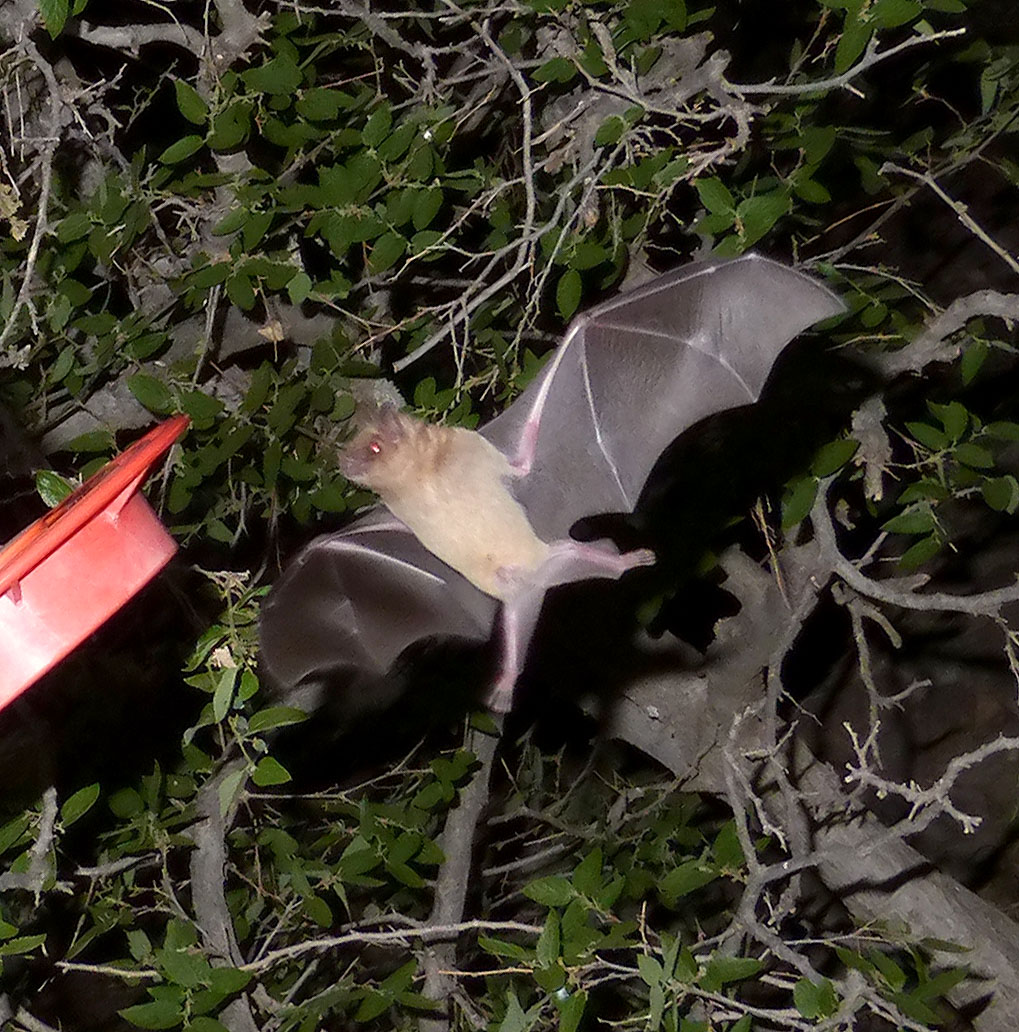
The Lesser Long-nosed Bat (Leptonycteris yerbabuenae) is a medium-sized bat endemic to Central and North America. It is often referred to as the Mexican long-nosed bat. A fully grown adult only grows to around eight centimeters and weighs no more than twenty-five grams.
The males and females are similar in size and it is very difficult to differentiate between the two sexes. Their tongues are designed for lapping nectar and are long with ridges. The wings help them enjoy energy-efficient long-distance flights in open habitats.
They are yellow-brown or gray with a rusty brown belly. They have small ears. They prefer semi-arid grasslands, forests, and scrubs. They can tolerate exceptionally high temperatures.
You can find this bat in New Mexico, California, and Arizona in the United States. They migrate south in September. Some migrate more than 1,600 kilometers every year.
This bat feeds on the nectar of night-blooming plants. They are important pollinators and sometimes eat cactus fruits in winter. They roost during the day in large colonies, which can house thousands of individuals in abandoned mines or caves.
4. Cave Nectar Bat
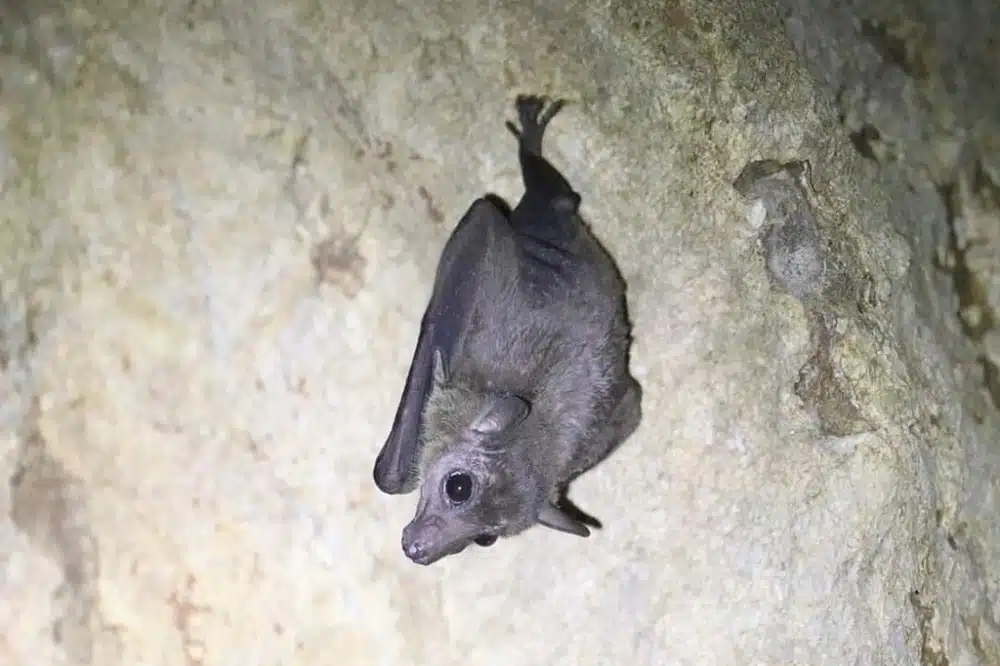
Cave Nectar Bats (Eonycteris spelaea), also known as the common dawn bat were first published in 1871. This bat is gray-brown to dark brown on the back. The belly is lighter and the neck is yellow-brown.
It has an elongated muzzle, adapted to drink nectar. The head and body can reach eleven centimeters, with a tail length of 1.8cm. They are mostly found in forests and agricultural areas. They roost in caves in large groups, of up to fifty thousand individuals.
It is a very important pollinator of fruit trees, feeding and pollinating for commercial crops, including bananas and jackfruit. There are thirteen plants that the cave nectar bat is known to feed on.
These bats live in Cambodia, Indonesia, Bangladesh, Thailand, Vietnam, the Philippines, and Singapore.
5. Egyptian Fruit Bat
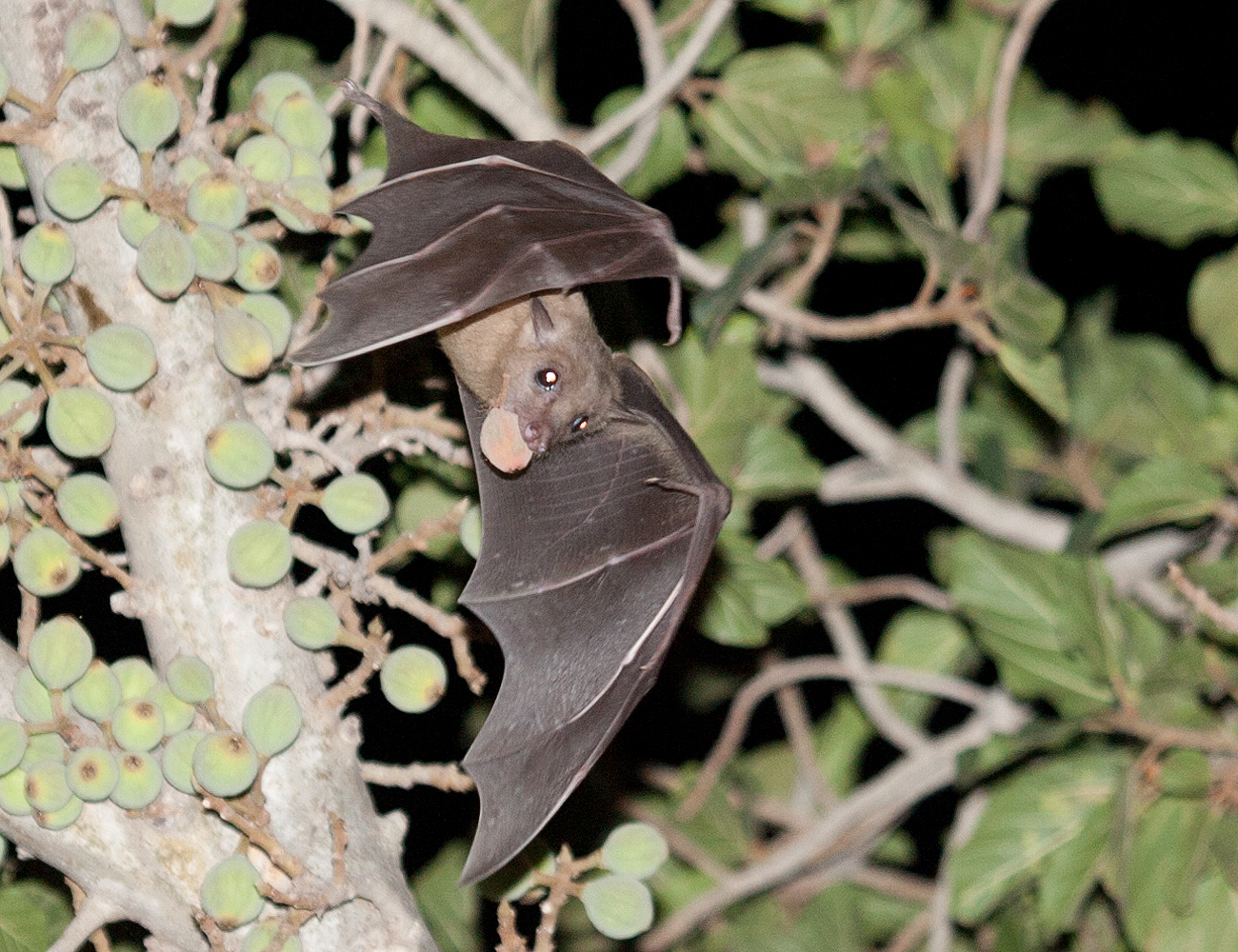
The Egyptian Fruit Bat (Rousettus aegyptiacus) is a medium-sized bat that can grow to fifteen centimeters in total length with a sixty-centimeter wingspan. It has short, soft fur. It can range in color from dark brown to light gray-brown. The belly is lighter and the neck collar is yellow-brown.
It has dark brown wings. The males and females are very similar, making it very difficult to tell them apart. It can see in low light with a highly developed sense of smell. It uses its claws to cling to pieces of orange.
This bat is frugivorous and consumes mostly fruit, though it does consume leaves from time to time. It is nocturnal and more active in the evening. They roost at dusk. It feeds on fleshy fruits including lilacs, figs, and wild dates.
It does short flights from its roost to fruit trees. It picks fruit and carries it back to the roost, where it then eats. They will travel up to twenty kilometers for an abundant fruit source. They are important pollinators for large and small seeds.
6. Greater Spear-nosed Bat

The Greater Spear-nosed Bat (Phyllostomus hastatus) lives in the Americas. It is found in the tropical regions of Belize, Guatemala, Bolivia, Argentina, Brazil, and Paraguay. It has also been found in Trinidad and Tobago.
They are commonly found around bodies of water, inhibiting open and forested regions. They can grow to thirteen centimeters with a forty-five centimeter wingspan. They are very light with long, thick dark brown hair.
They have well-developed noses with small ears. The lower lip has a V-shaped groove. This bat eats mice, birds, and other bats. It is omnivorous and mostly feeds on seeds, pollen, nectar, and fruits. Vertebrates only make up a small part of their diet.
7. Madagascan Fruit Bat

The Madagascan Fruit Bat (Eidolon dupreanum) is found in the coastal plains and inland high plateaus. It mainly feeds on flowers of Eucalyptus and is known to fly more than five kilometers to find food. It is important for dispersing seeds with germination enhanced as it passes through the gut.
This bat will feed on nectar if the fruit is not available. They have a very slow reproductive rate, producing one offspring each year. They are also susceptible to overhunting.
8. Madagascan Flying Fox

The Madagascan Flying Fox (Pteropus rufus) is a megabat, endemic to Madagascar. It has a diverse habitat, that includes forests, succulent woodlands, mangroves, and spiny thickets. It eats fruits, flowers, and leaves. It is a threatened species due to habitat loss.
This is the largest bat found in Madagascar that has a wingspan of 125 centimeters and weighs up to 750 grams. They are brown with a golden chest and shoulders. The wings are gray to black. The males and females are the same in appearance but the males have larger heads.
This is the most common bat in Madagascar and can be found throughout the island, except in the central highland areas.
9. Freater Short-nosed Fruit Bat

The Freater Short-nosed Fruit Bat (Cynopterus sphinx) has a long snout. They are brown to gray-brown and lighter on the underside. They have silky and fine fur. The wing bones and ears have white edges.
Adults have a forty-eight-centimeter wingspan. They can be found in Pakistan to Vietnam, common in tropical forests and where fruit crops are cultivated. They are also found in mangrove forests and grasslands.
10. New Zealand Lesser Short-tailed Bat

The New Zealand Lesser Short-tailed Bat (Mystacina tuberculata) is dispersed throughout the country. There are populations on surrounding islands and the main island. This bat lives in a range of altitudes and various habitats, including shrubland and farmland.
These small bats only weigh up to fifteen grams when fully grown. They have large ears, assisting with echolocation. They have small eyes with weak vision. Their small wings reduce their agility and slow down their flying speeds.
They have thick fur that can be light brown to dark brown. The belly is lighter and they have short tails. They have long talons that assist in climbing trees. They feed on insects, small invertebrates, fruits, and flowers. They prefer insects where possible. They can consume half their body weight in moths.
The bat also feeds on pollen and nectar, providing them with protein. The sugars of the nectar provide them with energy. They are very important pollinators in New Zealand.
11. Pale Spear-nosed Bat

Pale Spear-nosed Bats (Phyllostomus discolor) can grow to eleven centimeters in length with a forty-two-centimeter wingspan. The males are larger than the females. They have variable fur that ranges from pale yellow-brown to dark brown. The belly and chest are lighter.
They have large, rounded wings, broad faces with short snouts, and rounded ears. They have a well-developed nose leaf. They can be found from southern Mexico to Paraguay and southeastern Brazil.
This nocturnal bat roosts in hollow trees or caves during the day. They live in colonies of up to four hundred individuals. Each bat clusters in small groups of all males or a single breeding male and fifteen females.
Their diet comprises pollen, flowers, and nectar. They are important pollinators of spari trees. In some areas, they feed on insects during the wet season. They forage in groups, flying in a single file.
12. Long-tongued Nectar Bat

This bat (Macroglossus minimus) can be found in Malaysia, Thailand, the Philippines, New Guinea, northern Australia, and the Solomon Islands. They live alone or in small groups and do not create colonies. Their main diet is pollen and nectar, which they obtain from banana flowers and mangroves.
It is an important pollinator for numerous trees and has been recorded up to one thousand meters near coastal mangroves, forests, and lower montane forests.
They are small bats that grow to 8.5 centimeters in total length. They are red-brown with long fur. There is a dark brown stripe that runs from the top of the head and down the back.
13. Ryukyu Flying Fox

The Ryukyu Flying Fox (Pteropus dasymallus) is also known as the Ryukyu fruit bat. It is common in Taiwan, Japan, the Philippines, Batanes, and Babuyan. It prefers tropical and subtropical forests and swamps. It is classified as “Vulnerable” due to habitat loss and being hunted for food.
As adults, they can weigh up to five hundred grams. They have long fur that gives them a woolly appearance. They are red-brown with a yellow-white neck. The pointed ears are small and hard to identify under the thick fur.
They are nocturnal, roosting on their own or in small groups during the day in forested areas.
14. Dark Long-tongued Bat
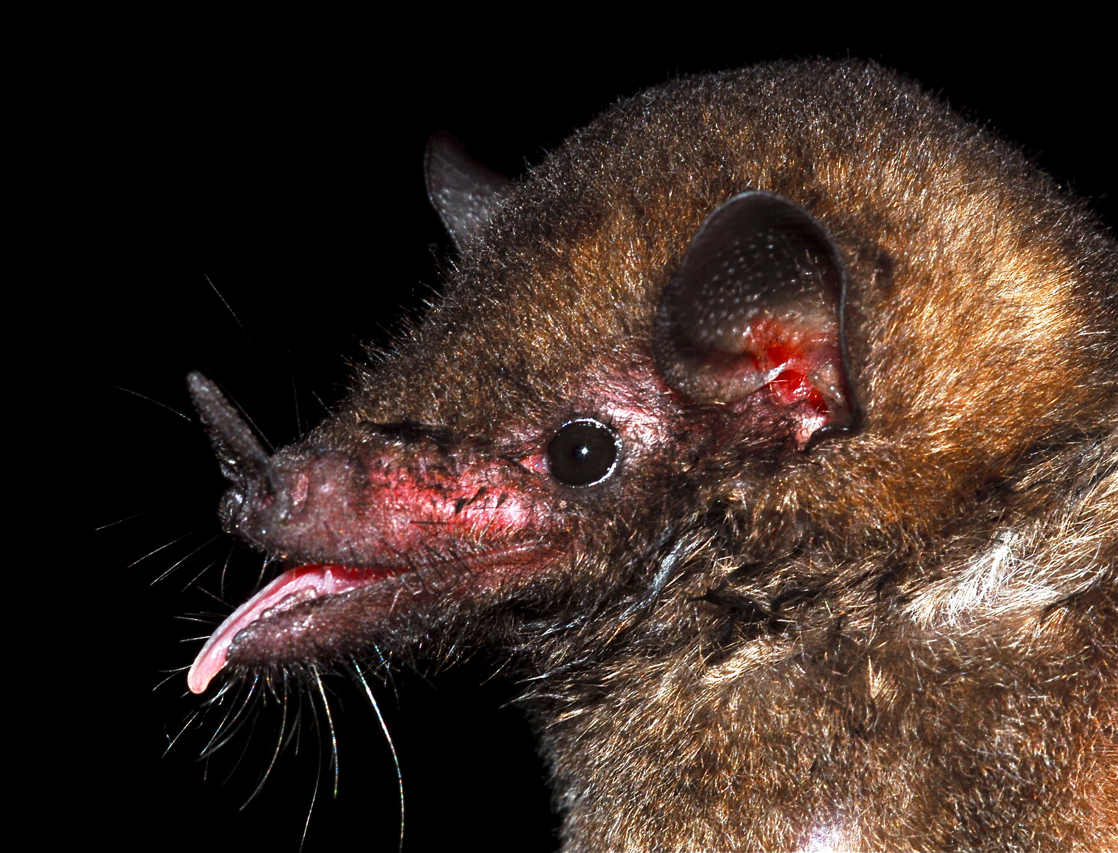
This bat (Lichonycteris obscura) comes from South and Central America. They can grow to 6.3 centimeters and weigh up to eleven grams as adults. They inhabit old-growth forests where they feed on insects, pollen, and nectar.
This small bat is tricolored. They have a narrow dark brown band in the dorsal fur. It has a small nose leaf that is triangular with whiskers. It has an elongated snout and lower jaw, which helps it sip the pollen.
It pollinates various flowers and plants. They are responsible for seed dispersal in Guatemala. They can be found in tropical deciduous forests, rainforests, and savannas. They roost during the day and forage at night.
15. Long-snouted Bat

This bat (Platalina genovensium) is endemic to Peru and northern Chile where it feeds on nectar and fruit from the columnar cactus. It has a wide distribution but is very rare. It is listed as near-threatened due the habitat loss, which has reduced their primary food.
This bat can grow to just shy of 9 centimeters and weigh just over twenty-six grams. It is the largest bat in the Lonchophylinae family. It has an elongated muzzle with a long tongue that is expendable.
This pale brown bat is lighter on the belly. They can be found where their preferred food source is. They live in colonies of up to fifty individuals, though separate into smaller groups inside the roost. The colonies are all-male or mixed, there are no female-only roosts. They are known to inhabit abandoned mines.
It is a primary pollinator and seed disperser of the columnar cactus, which is its primary food source.
16. Little Red Flying-fox

The Little Red Flying-fox (Pteropus scapulatus) is native to eastern and northern Australia. They weigh up to five hundred grams and occur along the coast and inland. They fly to tropical or temperate regions where nectar is abundant.
This bat uses an unusual method of drinking water. They skim across the top of a stream surface, gathering the water in their fur while they fly. They have dog-like heads and roost in large numbers. They can grow to twenty centimeters in total length.
This red-brown bat has short fur with darker fur on the head. The shoulders are cream-white and the wings are pale brown, which are translucent when in flight. They give off a yapping sound and screeches at a very high pitch.
17. Southern Long-nosed Bat

The Southern Long-nosed Bat (Leptonycteris curasoae) has short gray-brown fur and long snouts with short ears. They have a triangular noseleaf. The long tongue helps them lap up nectar. They are common in Venezuela and Colombia, inhabiting semi-arid to arid habitats.
This bat roosts in caves and abandoned mines during the day which they share with other bat species. They are agile flyers, feeding on fruit, nectar, and pollen. Ninety percent of their diet is made up of cactus species.
18. Choco Broad-nosed Bat
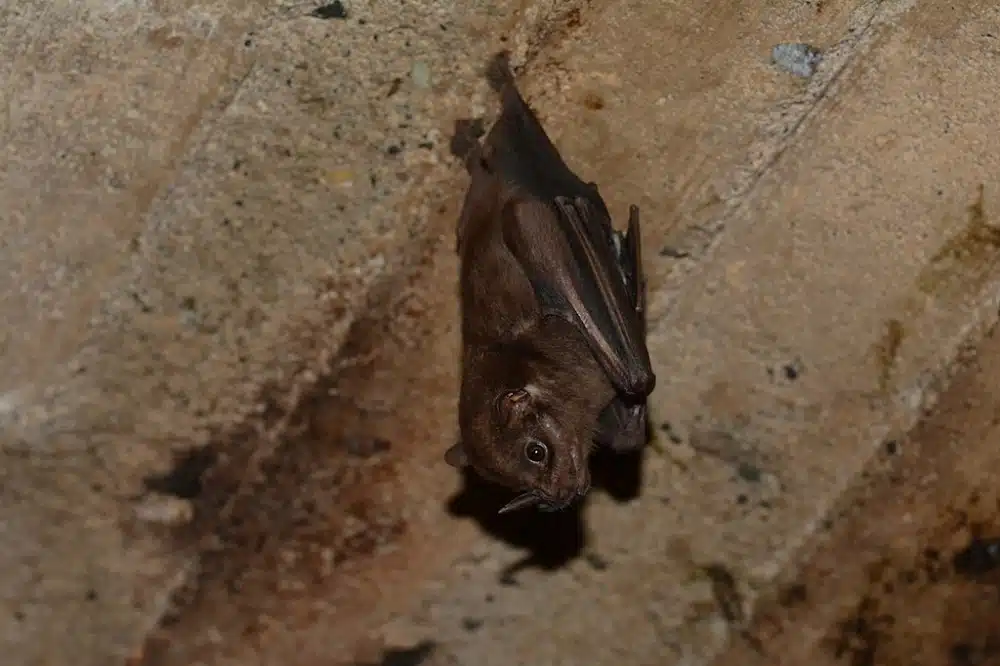
The Choco Broad-nosed Bat (Platyrrhinus chocoensis) is native to Panama, Ecuador, and Colombia. They are on the verge of habitat loss. They have dark facial stripes with narrow dorsal stripes. The dorsal hairs are tricolored. They only weigh up to thirty grams and are considered medium-sized bats.
19. Grey-headed Flying Fox

This bat (Pteropus poliocephalus) is native to Australia where its range extends from Queensland to Victoria. It is listed as “Vulnerable.” It is the largest bat in Australia with a one-meter wingspan and weighing up to one kilogram.
They are dark gray with a light gray head. The body and head are separated with a red-brown collar. They have long fur and do not have a tail. It does not echolocate and relies on smell and sight to locate nectar, pollen, and native fruits.
20. Sulawesi Flying Fox

The Sulawesi Flying Fox (Acerodon celebensis) or Sulawesi Fruit Bat is endemic to Indonesia and classified as “Vulnerable” due to unsustainable hunting. It feeds on coconuts and breadfruits. They roost in trees, often in mangrove forests.
They share roosting sites with black flying foxes. It is an important pollinator and seed disperser in their range and can carry large amounts of pollen in their fur, carrying it great distances.
21. Common Blossom Bat

This bat (Syconycteris australis) is sometimes referred to as the southern blossom bat or Queensland blossom bat. It feeds on nectar and pollen and is found in mainland Australia.
This small bat only weighs twenty-one grams with a body length of six centimeters. They are found in Salawati, Yapen, New Guinea, New South Wales, and eastern Queensland in tropical rainforests.